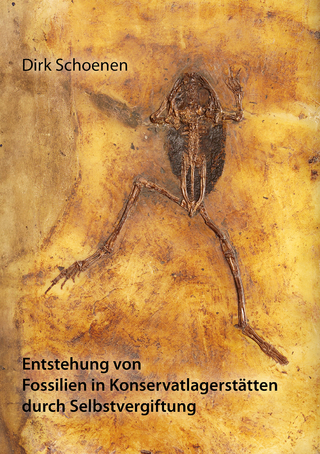
Dinosaurs
A Catalyst for Critical Thought
Seiten
2018
Cambridge University Press (Verlag)
978-1-108-71792-2 (ISBN)
Cambridge University Press (Verlag)
978-1-108-71792-2 (ISBN)
Students' passion for dinosaurs can be harnessed to trigger interest in science and be used to develop critical thinking skills. Three methods for developing critical thought are outlined in this Element: using dinosaur paleontology to illustrate logical fallacies and flawed arguments, evaluating primary dinosaur literature, and critiquing dinosaur documentaries.
University dinosaur courses provide an influential venue for developing aptitude beyond knowledge of terrestrial Mesozoic reptiles. Passion for dinosaurs, when properly directed, can trigger interest in science and be used to develop critical thinking skills. Examination of dinosaur paleontology can develop competence in information analysis, perception of flawed arguments, recognition of persuasion techniques, and application of disciplined thought processes. Three methods for developing critical thought are outlined in this Element. The first uses dinosaur paleontology to illustrate logical fallacies and flawed arguments. The second is a method for evaluating primary dinosaur literature by students of any major. The final example entails critique of dinosaur documentaries based on the appearance of dinosaurs and the disconnect between scientific fact and storytelling techniques. Students are owed more than dinosaur facts; lecturers should foster a set of skills that equips students with the tools necessary to be perceptive citizens and science advocates.
University dinosaur courses provide an influential venue for developing aptitude beyond knowledge of terrestrial Mesozoic reptiles. Passion for dinosaurs, when properly directed, can trigger interest in science and be used to develop critical thinking skills. Examination of dinosaur paleontology can develop competence in information analysis, perception of flawed arguments, recognition of persuasion techniques, and application of disciplined thought processes. Three methods for developing critical thought are outlined in this Element. The first uses dinosaur paleontology to illustrate logical fallacies and flawed arguments. The second is a method for evaluating primary dinosaur literature by students of any major. The final example entails critique of dinosaur documentaries based on the appearance of dinosaurs and the disconnect between scientific fact and storytelling techniques. Students are owed more than dinosaur facts; lecturers should foster a set of skills that equips students with the tools necessary to be perceptive citizens and science advocates.
1. Introduction; 2. Critical thought; 3. Dinosaurs as critical thought catalysts; 4. Jurassic Park, dinosaur idolatry, and educational obligation; 5. Summary.
| Erscheinungsdatum | 21.11.2018 |
|---|---|
| Reihe/Serie | Elements of Paleontology |
| Zusatzinfo | Worked examples or Exercises; 2 Tables, black and white |
| Verlagsort | Cambridge |
| Sprache | englisch |
| Maße | 153 x 230 mm |
| Gewicht | 60 g |
| Themenwelt | Naturwissenschaften ► Geowissenschaften ► Mineralogie / Paläontologie |
| Sozialwissenschaften ► Pädagogik | |
| ISBN-10 | 1-108-71792-6 / 1108717926 |
| ISBN-13 | 978-1-108-71792-2 / 9781108717922 |
| Zustand | Neuware |
| Informationen gemäß Produktsicherheitsverordnung (GPSR) | |
| Haben Sie eine Frage zum Produkt? |
Mehr entdecken
aus dem Bereich
aus dem Bereich
Buch | Softcover (2024)
Shaker (Verlag)
19,80 €
Von Prinz Eugen und der Seekuh in Ottakring: eine Zeitreise durch die …
Buch | Softcover (2024)
Naturhistorisches Museum (Verlag)
19,90 €


